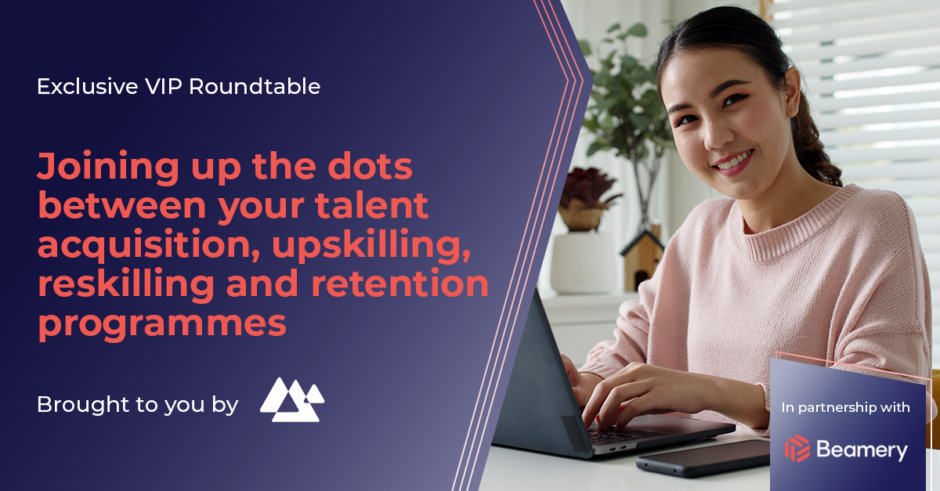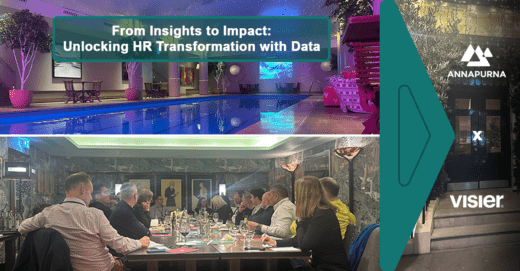On the 22nd March 2023, Annapurna hosted a spectacular event in partnership with Beamery, a talent lifecycle management platform, for an exclusive VIP roundtable discussion in Central London around ‘Joining up the dots between your talent acquisition, upskilling, re-skilling and retention programmes’.
The conversation was led by James Ballard (Managing Partner and Founder at Annapurna), Kartik Krishnan (Marketing Leader at Beamery) and Nate West (Account Director at Beamery) which brought about the following takeaways.
Even before the pandemic, smart HR teams were thinking about how to re-engineer their organisations to help them better survive in a fast-changing, increasingly volatile, unpredictable, complex and ambiguous world. What we have seen over the past year is an acceleration of that change and different responses to the how, when, why and where of work.
Being strategic vs putting bums on seats
As the nature of work rapidly changes due to advancing technologies such as AI and Automation, many organisations are struggling to understand their existing skills and the impending skills gap. As a result, despite wanting to become strategic, many organisations are simply focusing on just putting ‘bums on seats, rather than looking at internal mobility first and planning their hiring journey.
Internal mobility not only helps you maximise the potential of your workforce, but it also provides your employees with ample opportunities to move within the company bringing immense business benefits including employee retention, innovation, bridging skills gaps, and ultimately boosting the organisation’s performance. The discussion brought about the conversation that having a larger pool of internal talent makes it easier to hire as opposed to having a smaller talent pool. This, therefore, reduces the cost and time spent on recruitment.
When it comes to an organisation’s most valuable asset, a lot of areas of focus come to mind. However, today, it’s considered to be the knowledge of its employees and their productivity that is the main asset when it comes to business success. Your people are your biggest resource and can have huge impacts on the public perception of your brand. Managers should be encouraged to see talent mobility not as the loss of a star employee to another team, but instead as enabling their employees to grow and thus retain their skills in the company. Once leaders have learnt to value and treat their people well, the company will become profitable and reap the benefits.
Reaping the benefits of a System of record
Now more than ever, organisations need to be able to scale their workforces to meet ever-changing demands. The need to adapt and be agile has never been more important. When it comes to understanding an organisation’s current skills framework and whether it is fit for purpose and is scalable, it can be argued that ATS and HRIS systems only facilitate transactions. Candidates live in multiple “states” throughout their employee lifecycle, such as prospective applicant, applicant, employee, alumni etc and therefore a new over-arching system of record is needed.
Some leaders maintain that payroll will always be the most important source for current employees. Payroll accuracy and workforce efficiency depend on a fully integrated system, and without this technology in place, managers are less equipped to create cost-effective rosters and can therefore make it difficult to ensure that staff are paid in line with the hours they have worked. There are many advantages that come with using payroll data such as a wealth of reports which allow an in-depth analysis of staff costs for the organisation and even for individual jobs and contracts.
HR professionals and in-house recruitment professionals need to constantly understand the impacts of new legislation on the way organisations process, source and store data as well as how it will affect your talent pools. There are large debates around the GDPR considerations of talent pools and the balance between being proactive and being respectful of what the candidates want. When it comes to talent pools, organisations need to see GDPR as an opportunity to review and cleanse the data they are looking at. Organisations should acknowledge that GDPR is positive and provides many opportunities for business success.
AI for skill matching, but with “humans in the loop”
Artificial Intelligence (AI) technology has been gaining popularity in recent years due to the speed of advancements in capability. From robots serving food in restaurants to self-driving cars, these applications of AI can be seen in everyday life. AI-based recruitment platforms have been evolving as a means to help find more diverse talent pools and offer a more accurate approach to qualifying candidates by matching skills, rather than on a job title match. When it comes to technical roles, AI can be used to apply skills to external candidates and internal employees. However, when it comes to softer skills, humans will always need to be assessors and AI should be seen as complementing human interaction.
The depth of an organisation has a big impact on their skills awareness. For example, mapping the skills of a tech company consisting of 1000s of engineers is very different to a hotel chain with 100,000+ blue-collar workers of various forms. It was mentioned that an interesting option to start with when it comes to technical roles is to proactively fill in the skills that are the minimum requirements for the role. “Don’t strive for perfection, but get the ball rolling”. AI has a mass market potential which facilitates decision-making by making the process faster and smarter.
Therefore, if organisations are able to use AI correctly, it can be an objective enabler.
The World Economic Forum (2020) estimates that 70% of employers will offer upskilling and/or reskilling by 2025. If organisations do nothing to develop their approach to skills, they will only be pushed farther behind. It is therefore vital that organisations invest in their talent engine to prevent this from happening.



